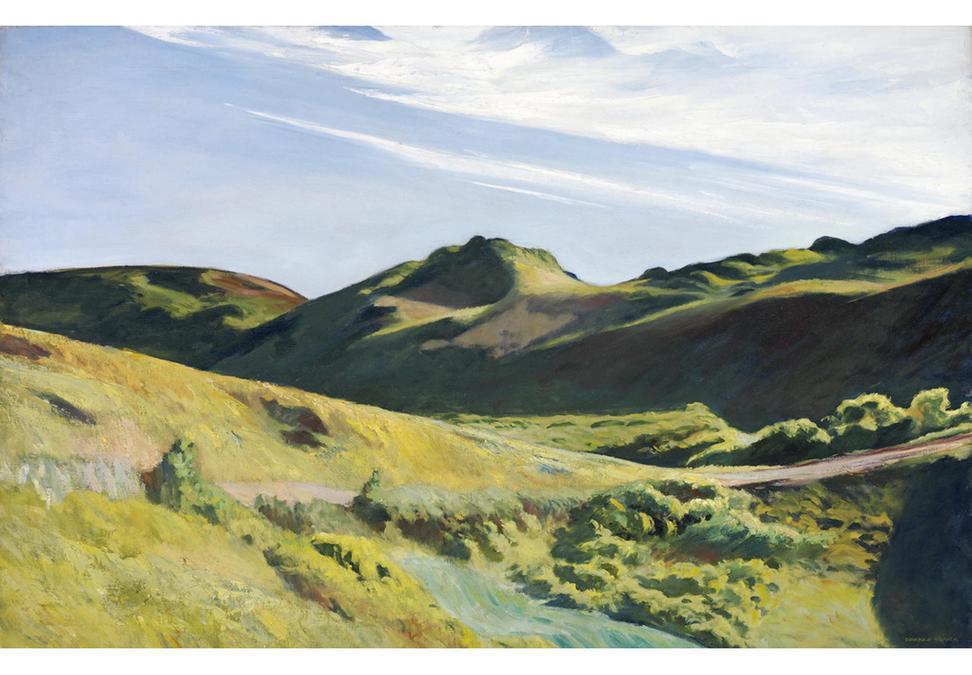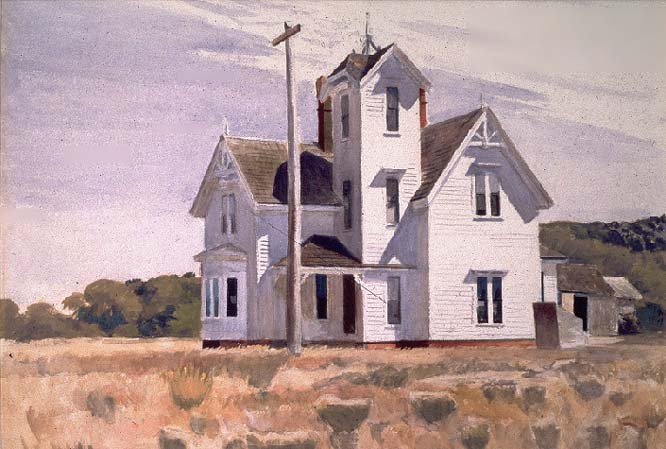Reynolda House Museum of American Art, Wniston-Salem, NC
Feb. 15 - May 13
![Edward Hopper, The Camel's Hump, 1931, oil on canvas, 32 1/4 x 50 1/4 in., Edward W. Root Bequest, Munson-Williams-Proctor Arts Institute Museum of Art, Utica, NY, 57.160. Photographer: John Bigelow Taylor and Diane Dubler Edward Hopper, The Camel's Hump, 1931, oil on canvas, 32 1/4 x 50 1/4 in., Edward W. Root Bequest, Munson-Williams-Proctor Arts Institute Museum of Art, Utica, NY, 57.160. Photographer: John Bigelow Taylor and Diane Dubler]()
![Image result]()
“The works of art in the exhibition are both wide-ranging and iconic,” says Reynolda Curator Allison Slaby. “Visitors will immediately recognize the drip-painting style of Pollock and the color-field painting of Rothko, but may be surprised by an Edward Hopper landscape, an artist who is better known for his images of urban spaces.”
The exhibition was formed from works of art once in the private collection of Edward Wales Root (1884-1956), son of Secretary of State Elihu Root and a pioneering collector of modern American art. In 1953, the Metropolitan Museum of Art displayed more than 100 works from Root’s holdings; it was the first private collection of contemporary art ever exhibited there.
The Met’s curator at the time said “for the successful creation of a collection of contemporary art the stars must be most auspicious.” Four years later, Root bequeathed a majority of his collection to the Munson-Williams-Proctor Arts Institute in Utica, N.Y., near his home in central New York.
The role of collector and the art of collecting will be fundamental to the unique installation of “Hopper to Pollock” at Reynolda. An earlier version of the exhibition has been on view at other museums, but this will be the first installation to include additional works from another private collection. Reynolda House curators are including a selection of American modernism from the private collection of Reynolda’s founder and the visionary behind the museum’s collection, Barbara Babcock Millhouse.
“Root and Millhouse are counterparts in their collecting approach,” says Phil Archer, the Betsy Main Babcock Deputy Director at Reynolda House. “They were selecting work by artists who only later became leading figures in the field. We wanted to fully explore the story of a collector’s vision, and create a space where our visitors can think about their own reasons for collecting objects, whatever they may be.”
The Hopper canvas purchased by Root, “The Camel’s Hump,” will hang for the first time in the company of a more typical Hopper in Millhouse’s collection,
![Image result]()
“House at Eastham,” painted the following year. Archer says interest in Edward Hopper is at an all-time high and hosting this exhibition in North Carolina came at just the right time.
“An Edward Hopper painting just sold at auction for more than double his previous record price,” he says. “Clearly his perspective on the American scene continues to resonate with collectors and museum-goers.”
The exhibition will be presented in four sections: Infinite Spaces: Modern American Landscape Painting; Painting the American Century: Still Life and Figure Studies; Liberation from the Physical World: Abstract Expressionism; and A Different Eye: Barbara Babcock Millhouse and the Practice of Collecting Modernism.
Other artists represented in “Hopper to Pollock” include Charles Burchfield, Arthur Davies, Arthur Dove, Arshile Gorky, George Luks, Reginald Marsh, Maurice Prendergast and Theodoros Stamos.
Feb. 15 - May 13

Edward Hopper, The Camel's Hump, 1931, oil on canvas, 32 1/4 x 50 1/4 in., Edward W. Root Bequest, Munson-Williams-Proctor Arts Institute Museum of Art, Utica, NY, 57.160. Photographer: John Bigelow Taylor and Diane Dubler

Arthur Dove, Tree Composition, 1937, wax emulsion on linen, 15 1/4 x 21 in., Edward W. Root Bequest, Munson-Williams-Proctor Arts Institute Museum of Art, Utica, NY, 57.136. Photographer: John Bigelow Taylor and Diane Dubler“Hopper to Pollock” showcases paintings and drawings by 32 celebrated American artists including Edward Hopper, Jackson Pollock, Willem de Kooning and Mark Rothko. These artists, and others, were responding to the 20th century’s volatile, exciting growth and scientific progress, as well as the devastating horrors of economic depressions, political uprisings, world wars and holocausts.
“The works of art in the exhibition are both wide-ranging and iconic,” says Reynolda Curator Allison Slaby. “Visitors will immediately recognize the drip-painting style of Pollock and the color-field painting of Rothko, but may be surprised by an Edward Hopper landscape, an artist who is better known for his images of urban spaces.”
The exhibition was formed from works of art once in the private collection of Edward Wales Root (1884-1956), son of Secretary of State Elihu Root and a pioneering collector of modern American art. In 1953, the Metropolitan Museum of Art displayed more than 100 works from Root’s holdings; it was the first private collection of contemporary art ever exhibited there.
The Met’s curator at the time said “for the successful creation of a collection of contemporary art the stars must be most auspicious.” Four years later, Root bequeathed a majority of his collection to the Munson-Williams-Proctor Arts Institute in Utica, N.Y., near his home in central New York.
The role of collector and the art of collecting will be fundamental to the unique installation of “Hopper to Pollock” at Reynolda. An earlier version of the exhibition has been on view at other museums, but this will be the first installation to include additional works from another private collection. Reynolda House curators are including a selection of American modernism from the private collection of Reynolda’s founder and the visionary behind the museum’s collection, Barbara Babcock Millhouse.
“Root and Millhouse are counterparts in their collecting approach,” says Phil Archer, the Betsy Main Babcock Deputy Director at Reynolda House. “They were selecting work by artists who only later became leading figures in the field. We wanted to fully explore the story of a collector’s vision, and create a space where our visitors can think about their own reasons for collecting objects, whatever they may be.”
The Hopper canvas purchased by Root, “The Camel’s Hump,” will hang for the first time in the company of a more typical Hopper in Millhouse’s collection,

“House at Eastham,” painted the following year. Archer says interest in Edward Hopper is at an all-time high and hosting this exhibition in North Carolina came at just the right time.
“An Edward Hopper painting just sold at auction for more than double his previous record price,” he says. “Clearly his perspective on the American scene continues to resonate with collectors and museum-goers.”
The exhibition will be presented in four sections: Infinite Spaces: Modern American Landscape Painting; Painting the American Century: Still Life and Figure Studies; Liberation from the Physical World: Abstract Expressionism; and A Different Eye: Barbara Babcock Millhouse and the Practice of Collecting Modernism.
Other artists represented in “Hopper to Pollock” include Charles Burchfield, Arthur Davies, Arthur Dove, Arshile Gorky, George Luks, Reginald Marsh, Maurice Prendergast and Theodoros Stamos.